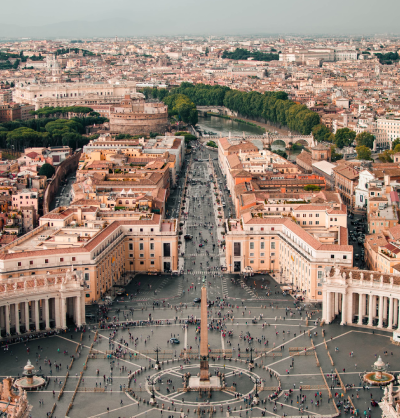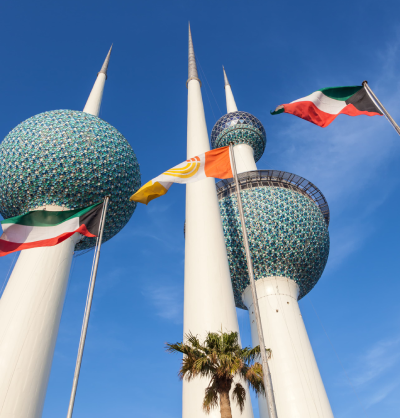Since the March 2011 outbreak of civil war an estimated 11 million Syrians have fled their homes. At the same time, conflicts in Iraq, Yemen, Libya and an assortment of Sub-Saharan African states pushed even more people to flee their countries. These factors generated a domino effect that applied monumental pressures on migrant destination countries—including those in Europe. Such pressure then fueled the emergence of a number of stereotypes and myths. This info-sheet is an attempt to cut through the jargon and – with the help of research and statistics compiled by international and national agencies – refute false narratives about migrants and migration.
MYTH 1: Refugees are Mostly a European Problem
According to the Office of the United Nations High Commissioner for Refugees (UNHCR), Europe is home to just 6% of global refugees, compared with 39% in the Middle East and North Africa, and 29% in the rest of Africa. Specifically, among Syrian refugees, the vast majority are in bordering countries: Turkey, Lebanon, Jordan and Iraq. By the end of 2015, Turkey was hosting more than 2.2 million Syrian refugees, Lebanon hosted roughly 1.2 million, Jordan hosted more than 650,000. The financial burden is also concentrated on these countries: between 2012 and 2013, for example, Jordan spent almost $8.2 billion on hosting Syrians. As of 2016, a little more than one million refugees arrived in Europe by sea: they represent just 0.3% of the continent’s total population. Of them, more than half are now women and children. Undoubtedly their presence represents a challenge for European policy-makers, especially with regards to their integration. At the same time, they can also represent an opportunity. Given that the growth in the European native population is actually in decline, refugees and migrants can sustain population levels and provide a base of working age people to support a growing number of retirees. Referring to the ageing population in Germany, the Washington Post has even gone as far as to refer to the situation as a demographic timebomb, explaining why German Chancellor Angela Merkel is seeing the influx of often highly educated refugees as a potential boon for her country.
MYTH 2: Most Arrivals are not Refugees but Economic Migrants who Steal Jobs and Burden the Welfare System
By definition, refugees are people that flee their countries to escape violent conflicts or persecution, making use of a universal legal right to asylum, something included in the Universal Declaration of Human Rights. Migrants, instead, are a broader category which does include those moving for economic reasons, such as famine, but also people fleeing environmental disasters. The great life-risks refugees and migrants take in fleeing are testament to the seriousness of the situation they escape from.
At the peak of the refugee crisis of 2015, Hungary’s Prime Minister, Viktor Orban, claimed that 95% of those trying to reach Europe were, in fact, not refugees but economic migrants. However, per statistics of international agencies such as the UNHCR, this claim is unsubstantiated. Accordingly, nine out of ten migrants arriving in Greece in 2015 were from Syria, Afghanistan and Iraq, while citizens of Eritrea, Somalia and Sudan (countries plagued by civil wars) comprised 41% of the arrivals in Italy. All in all, citizens from countries that have the right to protection in the EU accounted for approximately 75% of illicit arrivals by sea in 2015-2016.
Other research, conducted by the OECD, found that rather than stealing (unskilled) jobs, refugees expand the domestic market and create a job for every one they occupy. In some countries, the research continues, refugees were responsible for nearly one third of economic growth in the period from 2007 to 2013. AT the same time, research from national government agencies in the UK, Canada, Germany, Greece, Portugal and Spain shows that refugees are less or equally dependent on welfare and public funds than locals.
MYTH 3: Refugees and Migrants Produce Terrorism
Of the major terrorist attacks worldwide in recent years, the vast majority have been perpetrated by citizens born in the countries involved. However, after the November 2015 Paris terrorist attacks, a fake Syrian passport was found near the body of a suicide bomber. Though the other perpetrators were European nationals, the passport was used as justification for many European politicians to scale up xenophobic rhetoric.
As Human Rights Watch put it, the refugee route is one of the least effective ways to enter a country, given that easier options, not including a vetting process and collecting biometric information, are available. Indeed, many foreign fighters already have European citizenship that allows them to safely board a plane. According to research conducted by the International Centre for Counter-Terrorism (ICCT), up to April 2016, almost 4,300 foreign fighters from the EU joined Islamic State in Syria and Iraq and about 30% of them already returned to their home countries.
At the same time, closing doors to refuges and fully securitising immigration policies would represent a bigger risk: it might make local communities of foreign origins become even more marginalised, and create a favorable environment for the type of resentment and anger that fuels terrorism. Creating divisions between people and fostering hatred between social groups is part of the strategy of terrorism in the first place, especially fomenting the hatred of the European Muslim community, representing according to a PEW Research, around the 7% of the total European population.
MYTH 4: Rescue Operations Create a Pull-Factor to Refugees and Migrants
In October 2013, Italy launched Operation Mare Nostrum, a search-and-rescue operation for migrants crossing the Mediterranean. The programme saved more than 130,000 at sea. Yet, it was fiercely criticised. Several European politicians, including, noticeably, Britain’s Foreign and Commonwealth Office Minister of State, Baroness Anelay, argued that those missions created an unintended ‘pull factor,’ encouraging more migrants to attempt the dangerous sea crossing. However, reality was different. When, in October 2014, Mare Nostrum was cancelled and substituted by a smaller-budget European operation – Triton – that operated close to Italian shores, migrants continued to embark for Europe and only the number of those who died changed, increasing significantly. From January until the end of April 2015, 1,721 migrants and refugees died crossing the Mediterranean, setting 2015 up for a record death toll. This was yet another demonstration that Mediterranean migration is driven by human desperation, not by Europe’s willingness to rescue.
MYTH 5: Wealthy Arab Gulf States Have Not Been Doing their Part
In 2015, Amnesty International and other prominent groups wrongly noted that Qatar, United Arab Emirates, Saudi Arabia, Kuwait, Oman and Bahrain ‘have offered zero resettlement places to Syrian refugees.’ However, given that there are 25 Syrian refugees in Kazakhstan and 30 in Mexico, the claim that there is not a single one in the Gulf, should at least look suspicious.
First of all, the UNCHR, the primary data source for these agencies, does not count nor handle the refugees within the Gulf States, as these states are not signatories to the Refugee Convention. In reality, there are approximately 2 million Syrians in the Arab Gulf countries, many of whom arrived before the war, but they are not considered refugees and they are not part of the UNHCR statistics. Syrian citizens in the Gulf apply directly for work visas or residency permits, of which hundreds of thousands have been issued according to GCC national agencies. However, while the integration of Syrians in the Gulf societies is relatively smooth, there are concerns in the receiving societies. Some in the smaller Gulf countries, especially where foreign workers represent over 70% of the total population, are concerned that they could be definitely flooded demographically, economically and politically by non-nationals.
For this reason, the Gulf countries have focused on providing financial support to the population and to the United Nations agencies that assist them. Kuwait, Saudi Arabia, the United Arab Emirates and Qatar are in the top 10 countries giving aid to Syrian refugees. The four Gulf States have already given more than $2.3 billion – more than Germany, Canada, Japan, Australia, France and Italy combined. The UAE has funded refugee camps in Iraq and Jordan while Saudi Arabia and Qatar have donated funds, food, shelter and clothing to Syrians in Lebanon, Turkey and Jordan. Bahrain has built hospitals. Gulf countries have also provided direct support to the countries neighbouring Syria: for example Saudi Arabia has provided approximately $700 million to Jordan and Lebanon.









